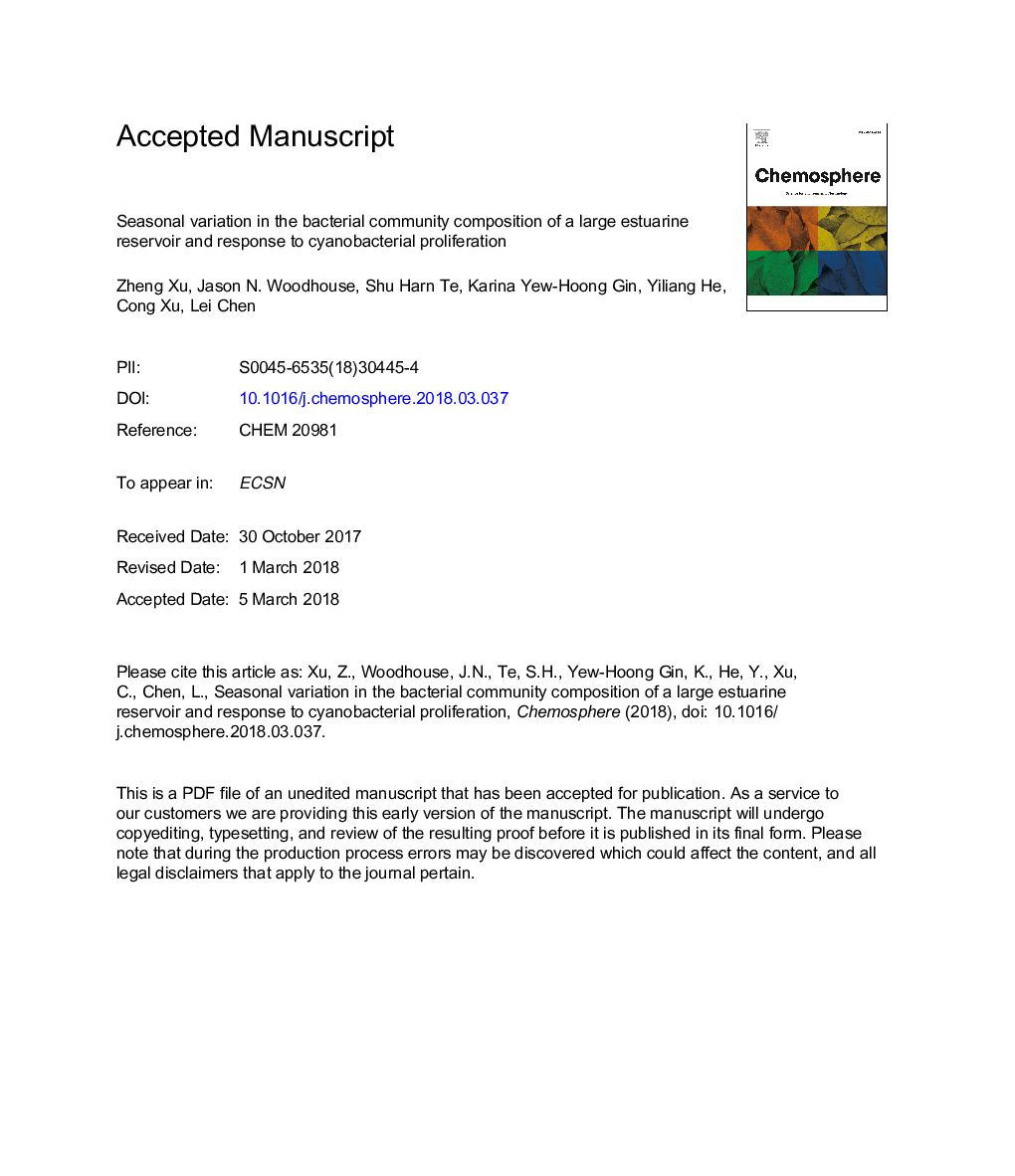| Article ID | Journal | Published Year | Pages | File Type |
|---|---|---|---|---|
| 8851466 | Chemosphere | 2018 | 39 Pages |
Abstract
This study employed high-throughput sequencing (HTS) to understand the variations in microbial community in the largest estuary reservoir located at the Yangtze River for a year. Correlations between the heterotrophic bacterial and cyanobacterial communities in the estuarine ecosystem were also investigated. Significant spatial and temporal changes were observed in the microbial community composition at all sites. These differences were mainly reflected on the variations of bacterial relative abundance. The modularity analysis on the network indicate that bacterial community response to the variations of environmental factors in the form of co-occurrence/exclusion patterns. In warm season, Synechococcus spp. being the dominant Cyanobacteria taxa exhibited high relative abundance in the reservoir. Water temperature was the critical driver for the proliferation of Synechococcus. Moreover, heterotrophic bacteria belonging to Actinobacteria, Proteobacteria (α-, β-, and γ-Proteobacteria), Bacteroidetes and Chlorobi, exhibited positive correlations with Synechococcus. The co-occurrence of these bacterial OTUs suggests that specific taxa may benefit from the proliferation of Synechococcus. In cold season, bacterial OTUs belonging to Actinobacteria and Bacteroidetes shown co-occurrence pattern with salt ions (including K+, Na+, Mg2+, Ca2+, Clâ and SO42â) inside the reservoir. In conclusion, further research is required to investigate the ecological functions of these taxa in estuarine ecosystems.
Related Topics
Life Sciences
Environmental Science
Environmental Chemistry
Authors
Zheng Xu, Jason N. Woodhouse, Shu Harn Te, Karina Yew-Hoong Gin, Yiliang He, Cong Xu, Lei Chen,
